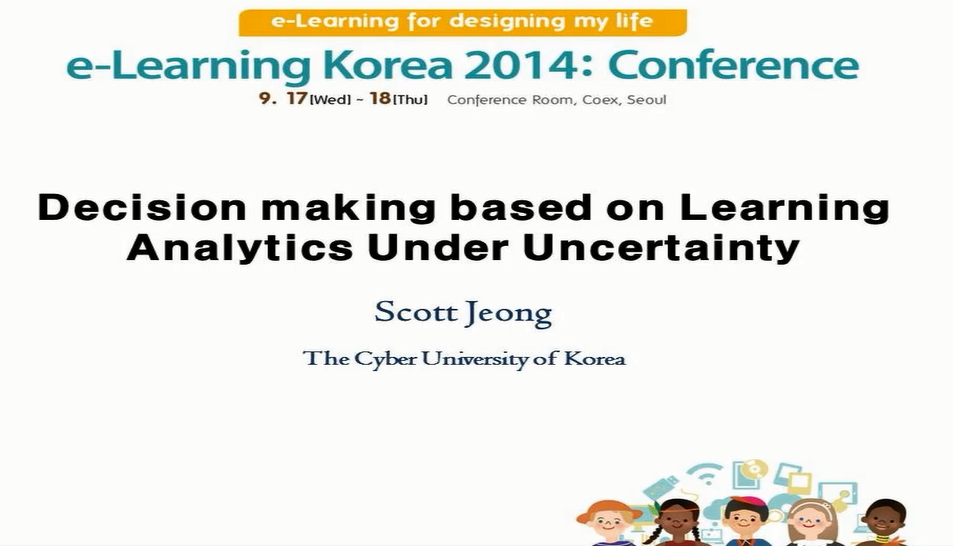Recent research on ‘fertility gap’ emphasizes that understanding the relationship between birth plans and subsequent birth outcomes is crucial in enhancing the effectiveness of policy intervention. Using the Korean Longitudinal Survey of Women & F...
http://chineseinput.net/에서 pinyin(병음)방식으로 중국어를 변환할 수 있습니다.
변환된 중국어를 복사하여 사용하시면 됩니다.
- 中文 을 입력하시려면 zhongwen을 입력하시고 space를누르시면됩니다.
- 北京 을 입력하시려면 beijing을 입력하시고 space를 누르시면 됩니다.

출산 계획과 출산 행위 간 연관성 분석과 시사점 = Association between Birth Plans and Subsequent Birth Behavior and Its Implications
한글로보기https://www.riss.kr/link?id=A106280147
- 저자
- 발행기관
- 학술지명
- 권호사항
-
발행연도
2019
-
작성언어
Korean
-
주제어
저출산 ; 출산 계획 ; 출산 행위 ; 불확실성 ; low fertility ; birth plan ; birth behavior ; uncertainty
-
등재정보
KCI등재
-
자료형태
학술저널
- 발행기관 URL
-
수록면
85-115(31쪽)
-
KCI 피인용횟수
2
- DOI식별코드
- 제공처
-
0
상세조회 -
0
다운로드
부가정보
다국어 초록 (Multilingual Abstract)
Recent research on ‘fertility gap’ emphasizes that understanding the relationship between birth plans and subsequent birth outcomes is crucial in enhancing the effectiveness of policy intervention. Using the Korean Longitudinal Survey of Women & Family (KLoWF), this study explores the relationship between birth plans and behavior and its implications. The data indicate that respondents’ demographic characteristics, such as age and parity, play a key role in birth plans and subsequent birth outcomes. Despite delayed fertility timing, substantial portion of women whose fertility intention was uncertain at the baseline also give subsequent birth outcomes through marriage. This study also finds that women with higher age at marriage are more likely to plan to have additional childbearing but that the chances of realizing their birth intention tend to be lower, compared to those women whose age at marriage is lower.
참고문헌 (Reference)
1 류기철, "한국여성의 출산율 변화와 출산간격 영향요인" 한국인구학회 32 (32): 1-23, 2009
2 정혜은, "취업여부에 따른 기혼여성의 둘째자녀 출산의도" 한국인구학회 31 (31): 147-164, 2008
3 우해봉, "출산에 대한 개인 특성과 부부 특성의 영향" 한국인구학회 40 (40): 79-105, 2017
4 이성용, "출산순위별 출산증가 요인 분석" 한국인구학회 32 (32): 51-70, 2009
5 민현주, "출산순위별 출산결정요인 분석" 한국사회학회 45 (45): 198-222, 2011
6 저출산·고령사회위원회, "저출산·고령사회 정책 로드맵" 저출산·고령사회위원회 2018
7 정성호, "저출산 정책의 효과성에 관한 연구" 한국인구학회 35 (35): 31-52, 2012
8 민현주, "엄마의 취업과 자녀터울에 관한 동태적 분석" 한국사회학회 41 (41): 106-126, 2007
9 박수미, "둘째 출산 계획의 결정요인과 가족내 성 형평성" 한국인구학회 31 (31): 59-77, 2008
10 김정석, "기혼여성의 출산아수별 추가출산계획" 30 (30): 97-116, 2007
1 류기철, "한국여성의 출산율 변화와 출산간격 영향요인" 한국인구학회 32 (32): 1-23, 2009
2 정혜은, "취업여부에 따른 기혼여성의 둘째자녀 출산의도" 한국인구학회 31 (31): 147-164, 2008
3 우해봉, "출산에 대한 개인 특성과 부부 특성의 영향" 한국인구학회 40 (40): 79-105, 2017
4 이성용, "출산순위별 출산증가 요인 분석" 한국인구학회 32 (32): 51-70, 2009
5 민현주, "출산순위별 출산결정요인 분석" 한국사회학회 45 (45): 198-222, 2011
6 저출산·고령사회위원회, "저출산·고령사회 정책 로드맵" 저출산·고령사회위원회 2018
7 정성호, "저출산 정책의 효과성에 관한 연구" 한국인구학회 35 (35): 31-52, 2012
8 민현주, "엄마의 취업과 자녀터울에 관한 동태적 분석" 한국사회학회 41 (41): 106-126, 2007
9 박수미, "둘째 출산 계획의 결정요인과 가족내 성 형평성" 한국인구학회 31 (31): 59-77, 2008
10 김정석, "기혼여성의 출산아수별 추가출산계획" 30 (30): 97-116, 2007
11 정은희, "기혼여성의 둘째자녀 출산계획 및 출산과 관련된 요인" 한국보건사회연구원 33 (33): 5-34, 2013
12 은기수, "결혼연령 및 결혼코호트와 첫 출산간격의 관계: 최근의 낮은 출산력 수준에 미치는 함의를 중심으로" 35 (35): 105-139, 2001
13 Hakim, C, "Whither the Child?: Causes and Consequences of Low Fertility" Paradigm Publishers 177-204, 2013
14 Blinder, A. S, "Wage Discrimination, Reduced Form and Structural Variables" 8 : 436-455, 1973
15 Ni Bhrolchain, M, "Uncertainty in fertility intentions in Bratain, 1979-2007" 9 : 99-129, 2011
16 Philipov, D, "Theories on fertility intentions: A demographer’s perspective" 9 : 37-45, 2011
17 Ajzen, I, "The theory of planned behavior" 50 (50): 179-211, 1991
18 Goldstein, J, "The emergence of sub-replacement family size ideals in Europe" 22 (22): 479-496, 2003
19 Fairlie, R. W, "The Absence of the African-American Owned Business, An Analysis of the Dynamics of Self-Employment" 17 (17): 80-108, 1999
20 The Center for Reproductive Rights, "Rethinking population policies: A reproductive rights framework"
21 Philipov, D, "Reproductive Decision-Making in a Macro-Micro Perspective" Springer 2015
22 Speder, Z, "Reproductive Decision-Making in Macro-Micro Perspective" Springer 79-112, 2015
23 Liefbroer, A. C, "Reproductive Decision-Making in Macro-Micro Perspective" Springer 1-15, 2015
24 United Nations (UN), "Report of the International Conference on Population and Development" United Nations 1995
25 Vatali, A, "Preference theory and low fertility:A comparative perspective" 25 (25): 413-438, 2009
26 Berrington, A, "Perpetual postponers? Women’s, men’s and couple’s fertility intentions and subsequent fertility behavior" 117 : 9-19, 2004
27 Morgan, S. P, "Parity-specific fertility intentions and uncertainty -the United States, 1970 to 1976" 19 (19): 315-334, 1982
28 Oaxaca, R, "On Discrimination and the Decomposition of Wage Differentials" 61 : 5-21, 1994
29 Quesnel-Vallee, A, "Missing the target? Correspondence of fertility intentions and behavior in the U.S" 22 (22): 497-525, 2003
30 Oaxaca, R, "Male-Female Wage Differentials in Urban Labor Markets" 14 : 693-709, 1973
31 Morgan, S. P, "Is the theory of planned behavior an appropriate model for human fertility" 9 : 11-18, 2011
32 Morgan, S. P, "Intention and uncertainty at later stages of childbearing: The United States 1965 and 1970" 18 (18): 267-285, 1981
33 Speder, Z, "How are time-dependent childbearing intentions realized? Realization, postponement, abandonment, bringing forward" 25 : 503-523, 2009
34 Ajzen, I, "Fertility intentions: An approach based on the theory of planned behavior" 29 (29): 203-232, 2013
35 Philipov, D, "Fertility intentions and outcomes: The role of policies to close the gap" 25 (25): 355-361, 2009
36 Toulemon, L, "Fertility intentions and actual fertility: A complex relationship" 415 : 1-4, 2005
37 Gauthier, A. H, "Fertility Rates and Population Decline: No Time for Children" Palgrave Macmillian 269-287, 2013
38 Testa, M. R, "Family formation in France: Individual preferences and subsequent outcomes" 4 : 41-75, 2006
39 Berrington, A, "Educational differences in fertility desires, intentions and behavior: A life course perspective" 21 : 10-27, 2014
40 Schoen, R, "Do fertility intentions affect fertility behavior?" 61 (61): 790-799, 1999
41 Thomson, E, "Couple childbearing plans and births in Sweden" 35 (35): 315-322, 1998
42 Thomson, E, "Couple childbearing desires, intentions and births" 34 (34): 343-354, 1997
43 EC, "Confronting demographic change: A new solidarity between the generations(Green Paper)" Commission of the European Communities 2005
44 Liefbroer, A. C, "Change in family size intention across young adulthood: A life-course perspective" 25 (25): 363-386, 2009
45 Heiland, F, "Are individuals’ desired family sizes stable? Evidence from West German panel data" 24 (24): 129-156, 2008
46 Fairlie, R. W, "An extension of the Blinder-Oaxaca decomposition technique to logit and probit models" 30 (30): 305-316, 2005
47 Lutz, W, "Adaptation versus mitigation policies on demographic change in Europe" 2007 : 19-26, 2007
48 통계청, "2017년 인구동태통계연보(총괄·출생·사망편)" 통계청 2018
동일학술지(권/호) 다른 논문
-
시장원리와 정보공개 정책은 노인요양시설의 질 개선을 가지고 오는가?: 기관의 평가등급유지와 이탈을 중심으로
- 한국사회복지정책학회
- 권현정
- 2019
- KCI등재
-
발달장애인 공공후견과정의 쟁점과 딜레마에 대한 탐색적 연구
- 한국사회복지정책학회
- 김미옥
- 2019
- KCI등재
-
사회적경제 조직의 복합목적 특성이 복합자원동원에 미치는 영향요인에 관한 연구 -다중이해관계자 매개효과를 중심으로-
- 한국사회복지정책학회
- 정원오
- 2019
- KCI등재
-
사회정의론에 기반한 사회복지철학이론의 탐색 :롤스와 샌델 비교
- 한국사회복지정책학회
- 유태한
- 2019
- KCI등재
분석정보
인용정보 인용지수 설명보기
학술지 이력
| 연월일 | 이력구분 | 이력상세 | 등재구분 |
|---|---|---|---|
| 2027 | 평가예정 | 재인증평가 신청대상 (재인증) | |
| 2021-01-01 | 평가 | 등재학술지 유지 (재인증) |  |
| 2018-01-01 | 평가 | 등재학술지 유지 (등재유지) |  |
| 2015-01-01 | 평가 | 등재학술지 유지 (등재유지) |  |
| 2011-01-01 | 평가 | 등재학술지 유지 (등재유지) |  |
| 2009-01-01 | 평가 | 등재학술지 유지 (등재유지) |  |
| 2006-01-01 | 평가 | 등재학술지 선정 (등재후보2차) |  |
| 2005-05-27 | 학술지명변경 | 한글명 : 사회복지정책 18집 -> 사회복지정책 |  |
| 2005-01-01 | 평가 | 등재후보 1차 PASS (등재후보1차) |  |
| 2003-01-01 | 평가 | 등재후보학술지 선정 (신규평가) |  |
학술지 인용정보
| 기준연도 | WOS-KCI 통합IF(2년) | KCIF(2년) | KCIF(3년) |
|---|---|---|---|
| 2016 | 1.43 | 1.43 | 1.27 |
| KCIF(4년) | KCIF(5년) | 중심성지수(3년) | 즉시성지수 |
| 1.34 | 1.42 | 1.617 | 0.44 |




 KCI
KCI DBpia
DBpia






